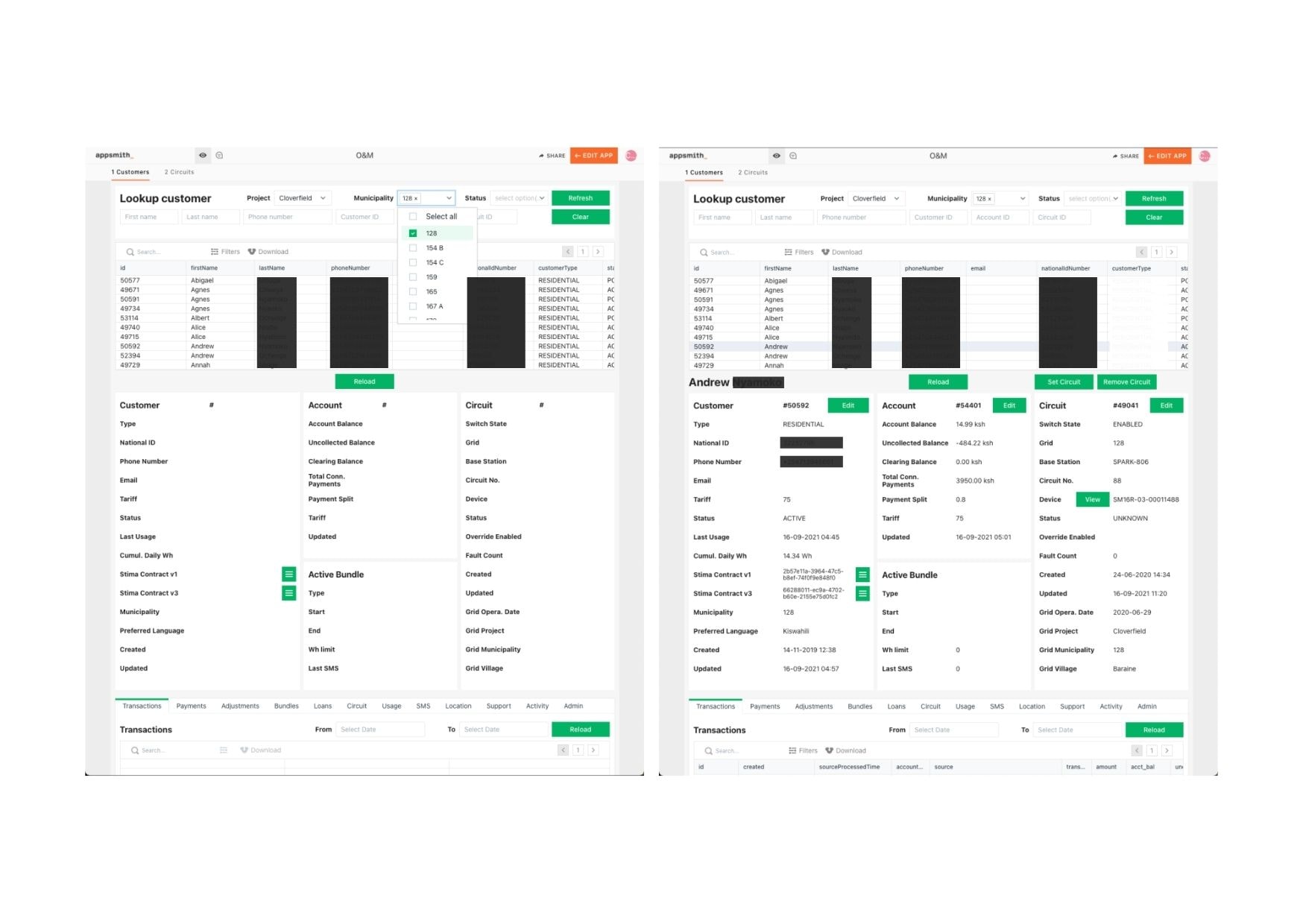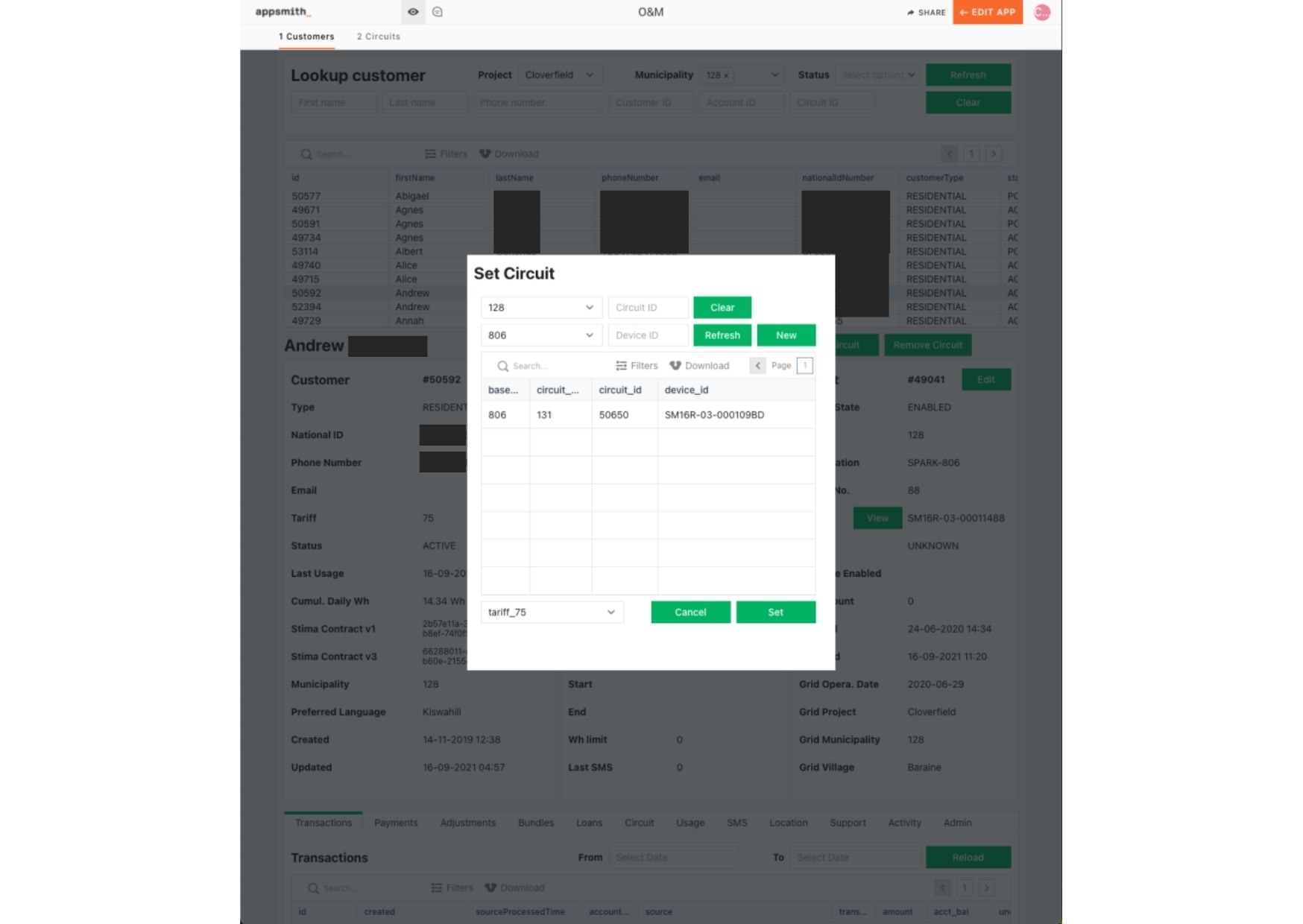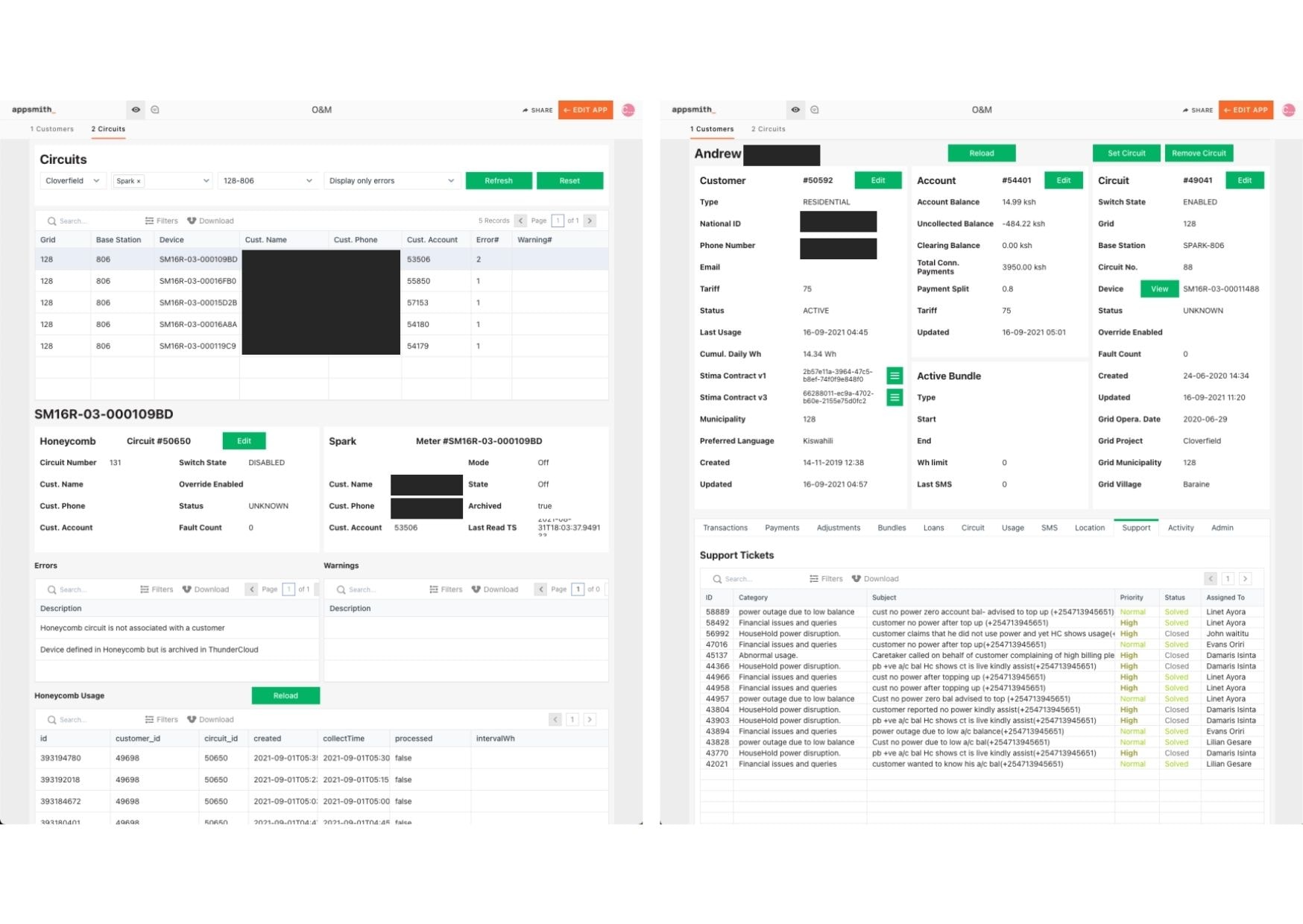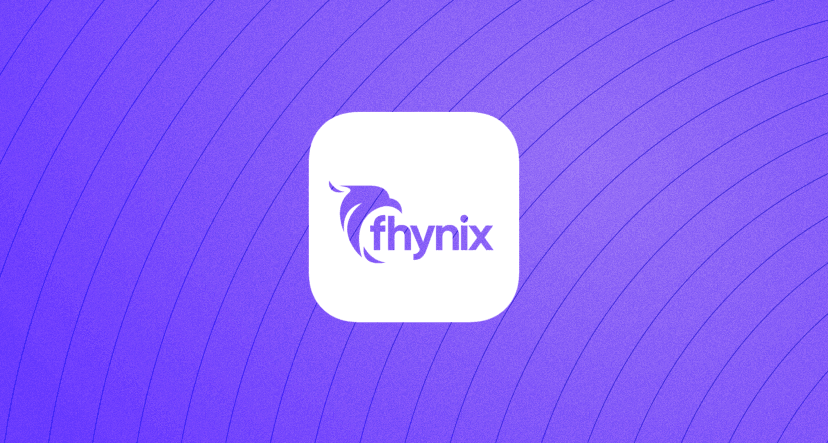An Energy Tech Venture Updated an Outdated but Critical Internal App In Less Than 3 Weeks with Appsmith
With Appsmith, ETV could synchronize data across multiple cloud systems and make data validation across numerous systems possible efficiently and quickly.
- Reduced
technical debt
- Synced data
across multiple systems
- Reduced
maintenance time
A technology venture founded in 2011 that partners with utilities and independent power producers to provide access to productive, affordable, and reliable mini-grid electricity for millions of rural homes and businesses around the globe was able to reduce its technical debt significantly. This venture’s proprietary technology platform and business model enable the financing, monetization, and management of off-grid utility solutions. We will refer to this company as ETV*. We spoke to Chris Webb, a product manager, about some of the technical challenges they were facing in terms of internal tools and internal software infrastructure and how they could use Appsmith to overcome those challenges.
The Burden of Technical Debt
ETV’s highly automated technology platform, which includes a smart meter and web-based software application, allows electricity providers to remotely manage microgrids through an array of tools. These tools help optimize performance and maximize revenue, including account management and payment processing, customer communications, remote monitoring of maintenance needs, and data analytics. To do this, an organization like ETV needs a powerful internal application that helps synchronize disparate databases, allows teams to interact with one another efficiently, easy to understand dashboards that enable employees and decision-makers to understand what’s crucial to their business.
Chris mentioned that they had a lot of technical debt. “Of course, there is always a pressure to minimize...rather economize the technical team or resources that are available to us. This compounded the issue of technical debt for us because things had not been updated, maintained, not to mention quickly adapting to business goals over time,” said Chris. He added that they were left with internal interfaces that did not reflect the data the business and the operations team needed to access.
Rolling out solar microgrids to rural communities is no easy task, particularly with the substantial economic challenges that come with running such a business. ETV operates in an economically challenging environment with constrained budgets but has a severe need for technically sound backend infrastructures. One of the examples that Chris mentioned was the older internal tool written in Angular.js; original developers had long gone, and finding new developers was difficult, and it was becoming an expensive proposition to update or maintain the legacy Angular app. It didn’t make sense for them to spend money on outdated technologies. “We wanted to expand the functionality of our internal tool; we wanted it to do more things, especially help with the efficiency of teams who were not technically savvy,” said Chris.
Build from Scratch and Lose Valuable Time
“‘Should we rebuild it?’ This was a question that we asked ourselves. The more we thought about it, the more we couldn’t justify it. It felt expensive, especially for an internal-facing tool where we weren’t serving an external customer,” said Chris when asked about why they chose to search for low-code solutions for their problem.
Chris and the rest of the team aren’t wrong. Traditional development usually requires large skilled teams who have in-depth knowledge of technologies and frameworks. Low code frameworks offer an easier and quicker way to solve application development problems.
Chris chose to go with Appsmith after testing Retool for a while. “I was initially impressed with Retool, but it has a steep learning curve for a low code tool. Support wasn’t great either,” he said and added, “My search stopped with Appsmith. It quickly did the things I needed it to do -- interfacing with Postgres, calling APIs, running searches, and data analytics.”
What Did ETV Do with Appsmith?
By the time Chris joined the company, he was facing some serious technical challenges. One of which was an outdated application with an interface that no longer served the increasing density of information on the backend. With Appsmith, they were able to surface data very quickly in the front-end. “There is a high agility with this that doesn’t require significant coding or any coding elements,” said Chris.
With Appsmith, they built an internal tool that deals with data like billing, usage, circuit switch events, alarms, and integrations with third-party services. For example, a core part of the company’s offerings deals with electricity meters set up at remote locations. The hardware for these meters comes with its cloud service. With Appsmith, they could synchronize data across multiple cloud systems and made data validation across numerous systems possible quite efficiently.

Currently, ETV’s internal tool built via Appsmith has two pages. One is customer-focussed and gives rich data on each customer. Chris was able to make this very little assistance, and he was able to optimize for an unprecedented problem in the community. The other page looks at data from all the circuits at all ETV’s different sites across Kenya. In this part of the application, they pull data from third-party cloud servers and the configurations on the meters, cross-reference it with their configurations, and check for mismatched ones. “What Appsmith has let us do is almost build a prototype visual version of what we hope our future automation process could look like too. It’s a stepping stone to a more comprehensive integration. It helped us debug a syncing algorithm and to validate the sync data we have in the backend,” said Chris.

Chris was catching up with a two-year technical gap at ETV. He was able to work creatively and addressed the needs of his team quickly with Appsmith. For an organization like ETV, which enables remote communities to leapfrog over outdated power infrastructures and into the future with stable electricity and fast internet, having a customizable solution is key. Spending on dedicated resources to build, maintain, and update applications becomes too expensive and cumbersome. They also have to take into account the cost of delays and feedback loops. These can be avoided with frameworks like Appsmith, which allow users to build UI in seconds and connect with any database. It removes the repetitive, time-consuming hurdles in building internal tools which are the backbone of organizations.

“We have a small team, and our organization is relying on government funding because it is straddling a challenging environment. Budgets are constrained. For us, Appsmith offers the sweet spot where we can think about our developer resources and costs while not compromising on build quality. It has been amazing for us because it would have taken us months to get a replacement app from the ground up; this took us weeks while increasing our productivity,” said Chris.
Take Appsmith out for a spin
Talk to our team about your custom requirements or request a demo.


